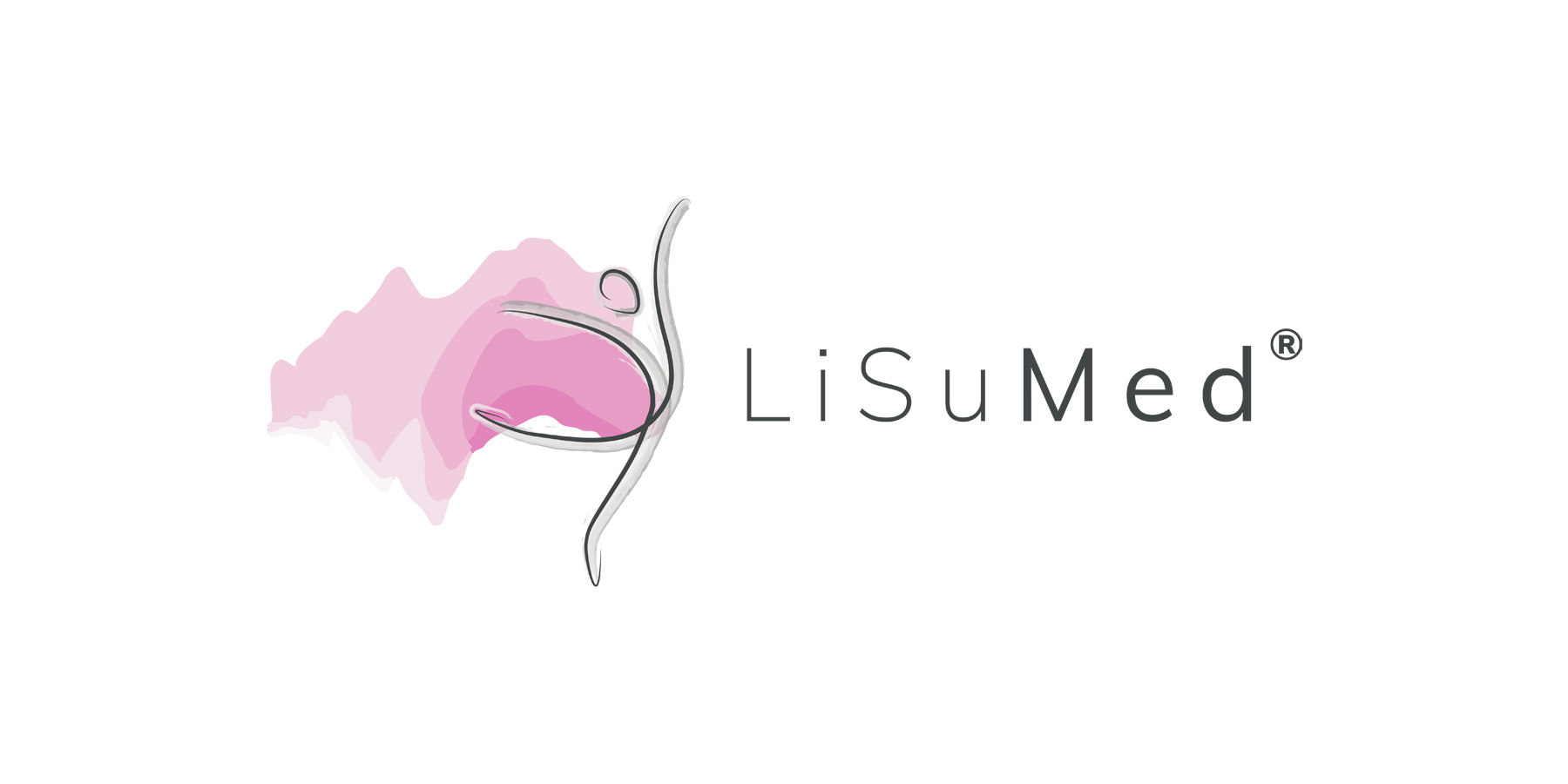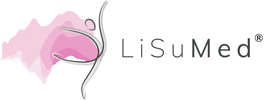LiSuMed ® from A-Z
Lipedema

LiSuMed ® from A-Z
Lipedema
A
The aesthetic suction of fatty tissue is about achieving the most beautiful body shape possible – although, beauty is always in the eye of the beholder.
The goal of lipedema surgery is to remove the pathologically altered fatty tissue as thoroughly and sustainably as possible while achieving a beautiful aesthetic result.
Lipedema and healthy fat cells are mixed in the tissue layer, and even today, it is impossible to distinguish between them.
Therefore, lipedema cells always remain in the fat layer because complete removal of all fat cells should not be performed under any circumstances.
If the lipedema cells are removed thoroughly and sufficiently, the remaining cells usually do not become symptomatic during one’s life, even if they increase in size.
Since lipedema liposuction is very different from aesthetic liposuction, it should only be performed by a surgeon experienced in this field. Only then can a lasting and beautiful result be expected. Aesthetics are also important in lipedema surgery. We always try to achieve the best possible result for each patient.
We regularly perform follow-up examinations after the surgeries to monitor the success of the treatment.
We use the most modern software, which allows us to keep in close contact with you. Our software facilitates the exchange of messages and pictures. Video conferencing is also possible, so you feel secure in the knowledge that we are always there to help you if you have any questions.
The preliminary anaesthesia discussion can take place by telephone or in person.
You will need support for the first few days at home. You should eat a balanced diet rich in vitamins and iron, drink plenty of fluids, and exercise as much as you can. You should take regular rest breaks and put your legs up.
It is unfavourable to sit or stand as this impairs lymphatic drainage and can increase swellings.
In the first few days, wound fluid may still leak out; obtain the appropriate documents in advance.
C
After surgery, you will wear the compression tights for 6 weeks both during the day and at night and another 2 weeks just during the day. So, a good fit is quite crucial here.
In addition, the shaping of the result after the operation takes place in the tights and an incorrect fit can cause pressure points or wrinkles in the tissue. Please wear your tights to the consultation so we can check for a proper fit.
Something important to note is that circular-knit compression stockings are not sufficient. These are used for venous diseases and do not sufficiently support the drainage of lymph in lipedema.
During the consultation, we will get to know you and discuss your complaints, wishes, goals and expectations. We will also discuss previous illnesses, medication, special medical risk factors, allergies, and so on.
Please wear your compression tights, if you have them, so we can check that they fit properly.
We will perform a thorough physical exam, including an ultrasound of the tissues with documentation.
You will be photographed from all sides and your body will be measured.
We will explain in detail the conservative and surgical treatment options available to you.
We will discuss your personal treatment plan with you and explain the surgical procedure to you individually.
Afterwards, we will prepare a medical report, which you can present to your health insurance company or the tax office, for example.
All costs incurred by you are listed individually, including anaesthesia, overnight stay, thrombosis injections, etc., so that you know exactly what costs you will incur.
In some cases, the costs for lipedema stage III are covered, but surgery is not possible in our clinic, only in a contracted clinic.
The interval between surgery and infection should be at least 7 weeks.
Therefore, elective surgery should be performed, at the earliest, seven weeks after the onset of symptoms of a covid-19 infection and in the absence of persisting symptoms.
The interval between vaccination and surgery should be at least 2 weeks.
An interval of at least 1 week should therefore be observed between vaccination and surgery, among other things to be able to correctly assign any symptoms that may occur, such as fever or chills, as a result of the vaccination and not a possible complication of the surgery. In addition, the appropriate competent immune response should have occurred after vaccination. Against this background, an interval of at least 2 weeks after complete immunization should be aimed for.
D
Lipedema is a complex and very individual clinical picture with an array of symptoms that can occur to varying degrees.
A lipedema diagnosis is made by a specialist in phlebology, vascular surgery, skin diseases or a family doctor. Other causes of the symptoms, such as venous disease or thyroid problems, can also be ruled out here.
Indicative symptoms of lipedema may be:
- the onset of changes in the legs and arms during puberty with an increase in fatty tissue
- a symmetrical increase in fatty tissue on the legs or arms with a slender torso
- the hands and feet are not affected
- severe pain with sensitivity to pressure and touch
- skin feels coarse-knotty and rough
- during hormonal changes, such as pregnancy or a change of birth control pill, the volume of the fatty tissue increases, often episodically
- being prone to hematomas (bruises) without corresponding injury
- sport and diet do not have a clear effect on the arms and legs
- other female family members are affected
F
Also, the amount of fat to be removed per operation must be limited. Depending on your individual state of health, more than 6-8% fat in litres based on body weight should not be removed.
Liposuction creates large wound areas under the skin, into which the body loses a lot of wound water due to the swelling that occurs. It also results in hematomas, thus depriving the body of red blood cells as oxygen carriers.
The loss of fluid in the tissue and the deficit in red blood cells can lead to a drop in blood pressure, circulatory weakness, and even collapse. In addition, anaemia can develop, which may even necessitate a blood transfusion. Therefore, careful surgery planning in advance is paramount. Your safety is always our top priority.
G
Pain is reduced or eliminated because the volume reduction in the tissue decreases the pressure.
Lymphatic drainage is also improved; thus, swelling is reduced. Permanent compression is usually no longer necessary.
The body appears more proportionate, and you feel comfortable in your body again.
Mobility is significantly improved, making sports and good nutrition fun again, and consequential damage to the joints is avoided.
H
I
L
However, not all patients require regular lymphatic drainage; we will discuss this with you during the consultation once we have examined you.
After the operation, however, you will need lymphatic drainage at least twice a week or more often if you have post-operative swelling.
P
Then the tissue is first loosened with a little tumescent solution. Only after this is the actual suction performed using the WAL technique, which allows nerves, blood, and lymphatic vessels to remain undamaged. The gentle WAL method is a very safe and effective procedure.
The pathological fatty tissue must be removed in a sustained, thorough, and circular manner. It is essential to follow a standardized procedure for all operations to achieve the best possible result for each patient with minimal risk.
Once the suction is complete, the incisions are closed, leaving the lower ones open to drain the irrigation fluid. We will put on your flat-knit compression tights. Wrapping your legs will complete the surgery.
In our holistic approach, the body and mind belong together. Due to lipedema, which often lasts for years, many women are under a lot of psychological strain. Sometimes you just want to talk or need some positive encouragement. Katja Frein can support you with this. She can be contacted directly at Begleiterin@lisumed.eu.
Q
R
However, you can be sure that we will put all our knowledge and experience to work for you to achieve the best possible result for you personally!
If this does not result in sufficient improvement of the symptoms, lipedema surgery may be the right course for you.
However, before you decide on an operation, you should weigh everything up carefully and inform yourself intensively about the procedure. For this purpose, our entire team is at your disposal!
S
Likewise, diet is an individual issue. Many patients benefit from an anti-inflammatory or even carbohydrate-reduced diet but listen to your body and find out what works for you.
Firstly, all formalities will be taken care of, and documents will be checked.
Your surgeon will talk to you again in detail. Then your arms or legs will be re-examined, the surgical area will be marked, and photos will be taken once again.
During the discussion with the anaesthesiologist, any last questions can be clarified. The anaesthesiologist will also provide you with access to intravenous administration of medication during the operation.
After the preparation of the operating room, you will be accompanied by a nurse, the operating area will be disinfected and covered, and anaesthesia will be induced. Then you fall asleep relaxed while we work.
After the operation, you will first rest a little in your bed. After a small meal, you should move as much as possible and drink a lot of fluids. Our team of nurses will care for you attentively. We will, of course, provide food and drink for your physical well-being.
In the evening, you will receive your first thrombosis injection.
After what is hopefully a quiet night with us, you will have a delicious breakfast, we will visit you for the morning rounds, and then your escort can pick you up.
Dr Majewski specializes in this procedure, and you can rely on her many years of surgical experience.
Wear your flat-knit compression tights consistently for several weeks before the operation because only decongested and soft tissue can be sucked well and thus achieve the most beautiful, even result.
Eat a balanced diet rich in vitamins and iron. If necessary, iron, folic acid, and vitamins should be supplemented additionally – discuss this with us or your family doctor.
On the days before the operation, you should drink enough to support your circulation.
Especially after surgery, you will benefit from water sports, which you may start again when the wounds are completely healed, usually 2-3 days after removal of the suture material.
W
The waterjet is best suited to achieve the best possible result for you. The water jet spares the tissue, including lymphatic channels and blood vessels.
The water jet makes it possible to loosen the fat cells and at the same time suck them out of the tissue.
Since the tissue is not swollen beforehand, the result can be assessed at any time during the operation.
Do you have any questions about our practice or our services?
Just give us a call or contact us by e-mail, and we will be glad to help you.
